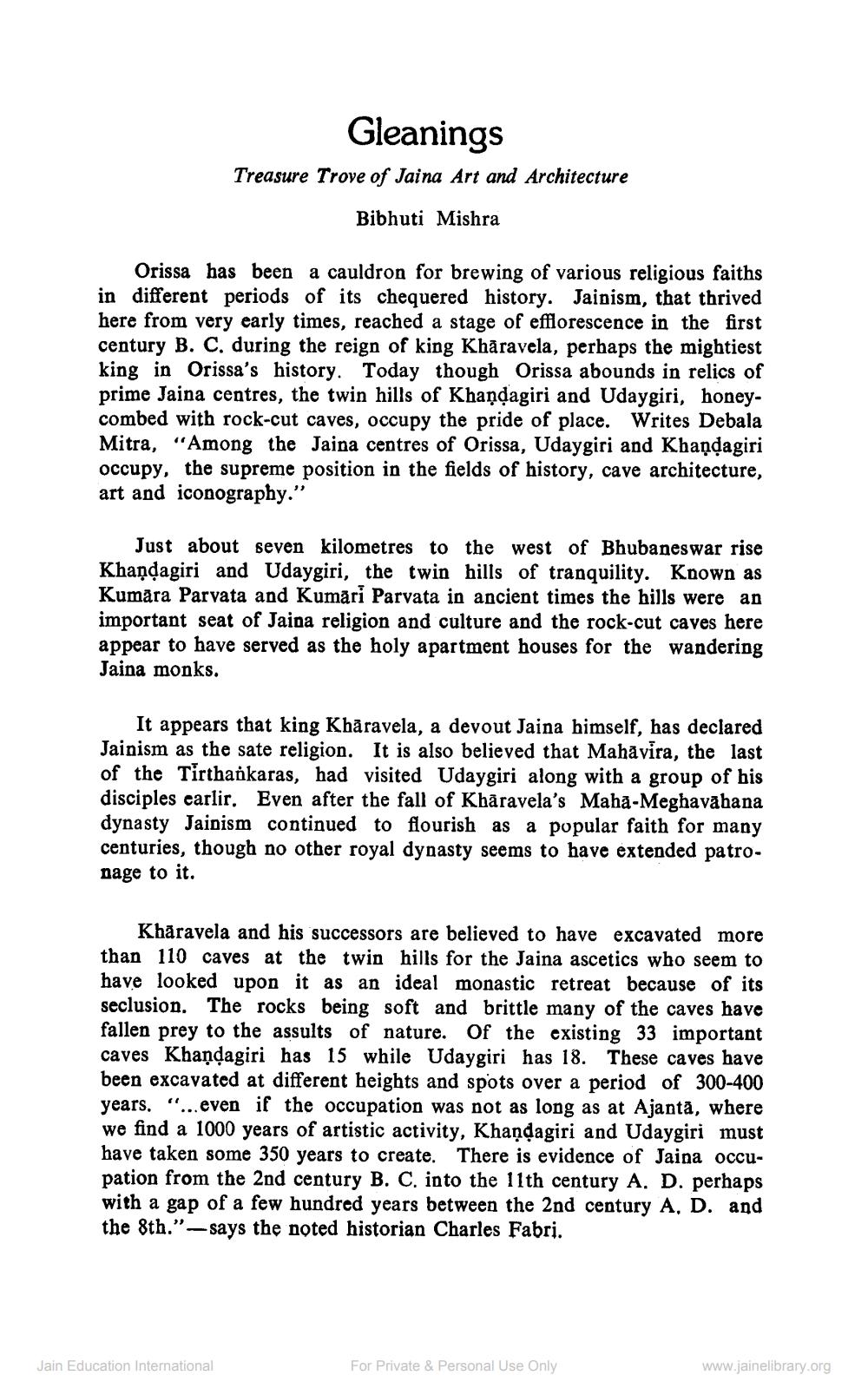________________
Gleanings Treasure Trove of Jaina Art and Architecture
Bibhuti Mishra
Orissa has been a cauldron for brewing of various religious faiths in different periods of its chequered history. Jainism, that thrived here from very early times, reached a stage of efflorescence in the first century B. C. during the reign of king Khāravela, perhaps the mightiest king in Orissa's history. Today though Orissa abounds in relics of prime Jaina centres, the twin hills of Khaņdagiri and Udaygiri, honeycombed with rock-cut caves, occupy the pride of place. Writes Debala Mitra, “Among the Jaina centres of Orissa, Udaygiri and Khaņdagiri occupy, the supreme position in the fields of history, cave architecture, art and iconography."
Just about seven kilometres to the west of Bhubaneswar rise Khaņdagiri and Udaygiri, the twin hills of tranquility. Known as Kumāra Parvata and Kumāri Parvata in ancient times the hills were an important seat of Jaina religion and culture and the rock-cut caves here appear to have served as the holy apartment houses for the wandering Jaina monks.
It appears that king Khāravela, a devout Jaina himself, has declared Jainism as the sate religion. It is also believed that Mahavira, the last of the Tirthankaras, had visited Udaygiri along with a group of his disciples carlir. Even after the fall of Khāravela's Maha-Meghavahana dynasty Jainism continued to flourish as a popular faith for many centuries, though no other royal dynasty seems to have extended patro. nage to it.
Khåravela and his successors are believed to have excavated more than 110 caves at the twin hills for the Jaina ascetics who seem to have looked upon it as an ideal monastic retreat because of its seclusion. The rocks being soft and brittle many of the caves have fallen prey to the assults of nature. Of the existing 33 important caves Khandagiri has 15 while Udaygiri has 18. These caves have been excavated at different heights and spots over a period of 300-400 years. "... even if the occupation was not as long as at Ajanta, where we find a 1000 years of artistic activity. Khandagiri and Udaygiri must have taken some 350 years to create. There is evidence of Jaina occupation from the 2nd century B. C. into the 11th century A. D. perhaps with a gap of a few hundred years between the 2nd century A. D. and the 8th."-says the noted historian Charles Fabri.
Jain Education International
For Private & Personal Use Only
www.jainelibrary.org




